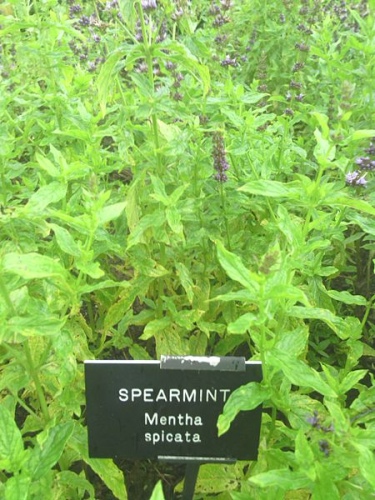[1] Chinese System of Food Cures Prevention and Remedies. 1986 Lu, Henry. Sterling
Publishing Co., Inc. New York. USA. Distributed in Australia by Capricorn Book
Co. Pty Ltd. Lane Cove, NSW. ISBN 0-8069-6308-5.
Images
1.
commons.wikimedia.org
by Victuallers CCSA 3.0 Unported
 Mentha
spicata. 留
兰 香
Liú lán xiāng Spearmint Family:
Labiatae
Mentha
spicata. 留
兰 香
Liú lán xiāng Spearmint Family:
Labiatae